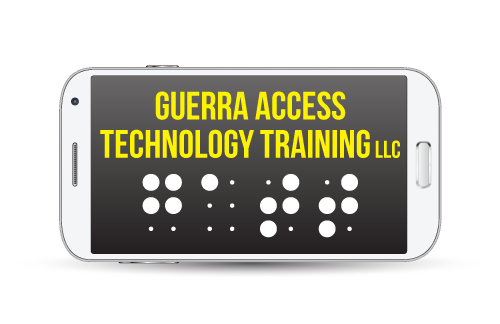Making QR codes more accessible and improving business accessibility
Quick Response (QR) codes are two-dimensional barcodes that can be scanned with smartphones and other digital devices. They can store a wide range of data, from website URLs to photos and videos. They are commonly used in advertising and marketing campaigns, to send and receive payment-related information, to authenticate online accounts and for several other purposes.
Data shows that in 2021, more than 75 million people in the US scanned at least one QR code using their smartphone. Due to their wide range of applications, it’s crucial to make QR codes more accessible so that people with disabilities can use them without any difficulties.
How to Make QR Codes More Accessible to People with Disabilities?
Larger Size
While there is no standardized size for QR codes, many fall within the range of 0.8 x 0.8 inches to 1 x 1 inch. These QR codes can be too small to notice for people with low vision. Increasing their size can make spotting them easier for people with low vision.
Marketing teams must decide the size of a QR code based on the scanning distance (the distance from which people should be able to scan them). If you want people to be able to scan the codes from a distance of 1.5 to 2.5 feet, the code should be 2.4 x 6.3 inches in size. For a scanning distance of 4 to 12 feet, the code should be 6.3 x 30 inches in size. The longer the scanning distance, the larger the code should be.
Contrasting Colors
QR codes with contrasting colors can be easier to spot for people with low vision. Common examples of contrasting color combinations include white text on black background, black text on yellow background, and blue text on yellow background. Ideally, the contrast ratio between the foreground text and background color should be 3:1. Still, the colors can be adjusted depending on the QR code’s size to ensure it can be easy to spot, even in low-light conditions.
Placement of the Code
For QR codes to be placed in a physical space, the placement plays a key role in making them accessible. They should be displayed comfortably so people in wheelchairs can scan them easily. Also, the codes should be displayed so that people with mobility issues can scan them without holding their device for too long or changing the orientation of their device.
How to Use QR Codes to Make Your Business More Accessible
Businesses can use QR codes to make their brands and products more visible and accessible to people with disabilities. Below are some ways you can use QR codes to make your business more accessible.
- Use QR codes to provide information about your products, services, and brands so that customers can scan the codes and access the information whenever they want. It can be particularly useful for people with ADHD and anxiety disorders who can easily distract or feel overwhelmed in a public setting.
- Use QR codes to offer your customers alternative, contactless payment methods.
- Use multilingual QR codes and provide information in multiple languages so customers can access it in their preferred language.
- Use QR codes to allow customers with disabilities to sign up for contests and loyalty cards without filling out a form physically.
- Incorporate braille and other tactile writing systems into QR codes to be displayed in physical spaces so that people with visual impairments can easily find out where the codes are.
- Provide text alternatives (brief descriptions to inform people about the code’s purpose and where they will be redirected to) so that people can decide whether they want to scan a particular QR code.
- Provide how-to instructions wherever possible so that people who have never used QR codes can use them without relying on someone else. Make sure the instructions are precise and easy to understand.
Closing Thoughts
QR codes have an extensive range of applications and are used by millions daily. By making them more accessible and easier to use, businesses can attract a broader range of customers and do their part in creating a digitally inclusive society.
